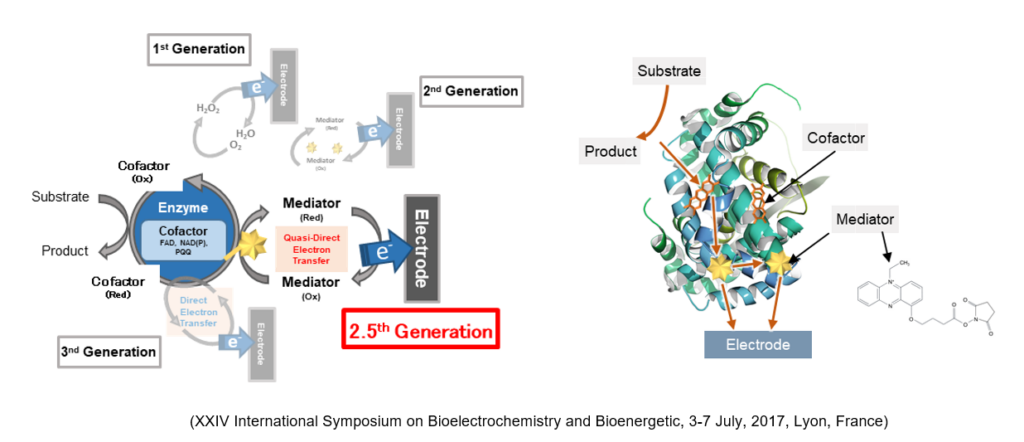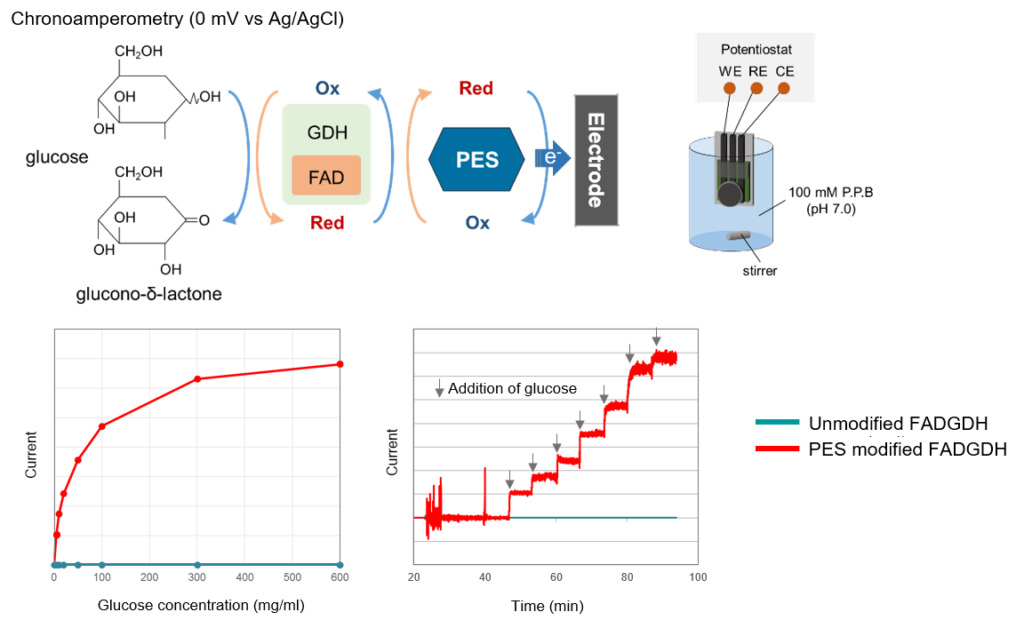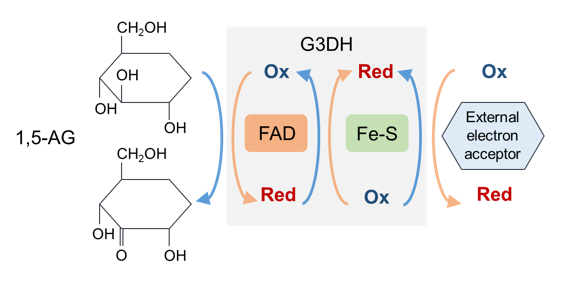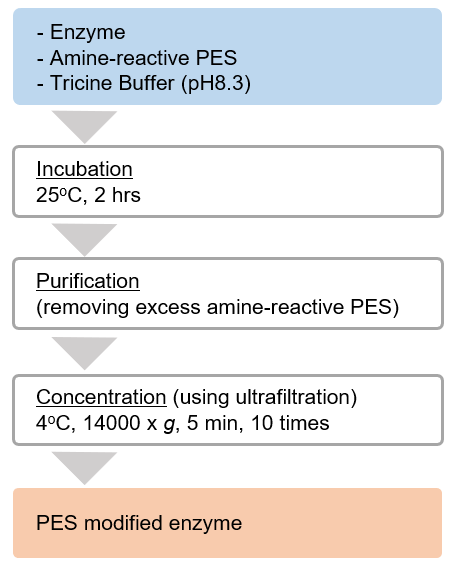Amine-reactive PES

Amine Reactive Electron Mediator
-
Product codeA543 Amine-reactive PES
-
CAS No.-
-
Chemical name1-[3-(Succinimidyloxycarbonyl)propoxy]-5-ethylphenazinium triflate
-
MWC23H22F3N3O8S=557.50
| Unit size | Price | Item Code |
|---|---|---|
| 10 mg | $684.00 | A543-10 |
Product Description
Amine-reactive PES is a novel amino-reactive electron mediator. The mediator is able to be linked to enzymes such as glucose dehydrogenase by a covalent bond, and so is expected to be applied to next generation biosensors.

A New Generation of Electron Mediator
By modification of enzyme with Amine-reactive PES, the mediator which binds to the enzyme surface is able to transfer the electrons from reduced co-factor to the electrode. This sensing system may be useful for reducing mediator leakage from the electrode and replacement of expensive metal complex compounds.

Modification of enzymes using Amine-reactive PES is patent pending.
Technical info

The concentration of glucose was measured by modifying enzyme using arPES and this sensing system has the potential to develop continuous monitoring for various target molecules such as glucose.
The Sensing System is Applicable to the Following Enzymes
– FAD-dependent glucose dehydrogenase (FAD-GDH)
– L-Lactate oxidase (Lox)
– Fructosyl amino acid oxidase (FAOx)
– Cholesterol oxidase (ChOx)
– Pyranose oxidase (PyOx)

Procedure for PES-modification

Easy procedure: Just mix enzyme and amine-reactive PES
References
1) Stefano Ferri, Katsuhiro Kojima and Koji Sode, “Review of Glucose Oxidases and Glucose Dehydrogenases: A Bird’ s Eye View of Glucose Sensing Enzymes”. Journal of Diabetes Science and Technology, 2011, 5(5),1068.
2) Kentaro Hiraka, Katsuhiro Kojima, WakakoTsugawa, Ryutaro Asano, Kazunori Ikebukur and Koji Sode, "Rational engineering of Aerococcus viridans l-lactate oxidase for the mediator modification to achieve quasi-direct electron transfer type lactate sensor", Biosens Bioelectron., 2020, 151, 111974.
3) G. Kim, H. Cho, P. Nandhakumar, J. Park, K. Kim and H. Yang, "Wash-Free, Sandwich-Type Protein Detection Using Direct Electron Transfer and Catalytic Signal Amplification of Multiple Redox Labels", Anal. Chem., 2022, doi:10.1021/acs.analchem.1c04615.
4) M. Nagata, J. Lee, S. Henley, K. Ikebukuro and K. Sode, "An Amine-Reactive Phenazine Ethosulfate (arPES)—A Novel Redox Probe for Electrochemical Aptamer-Based Sensor", Sensors, 2022, doi:10.3390/s22051760.
Handling and storage condition
| Appearance: | Dark red to blackish brown powder |
|---|---|
| Purity (HPLC): | ≧ 90.0% |
| Solubility in water: | To pass test (clear, dark red to dark red purple) |
| NMR spectrum: | Authentic |
| -20°C, Protect from moisture |













